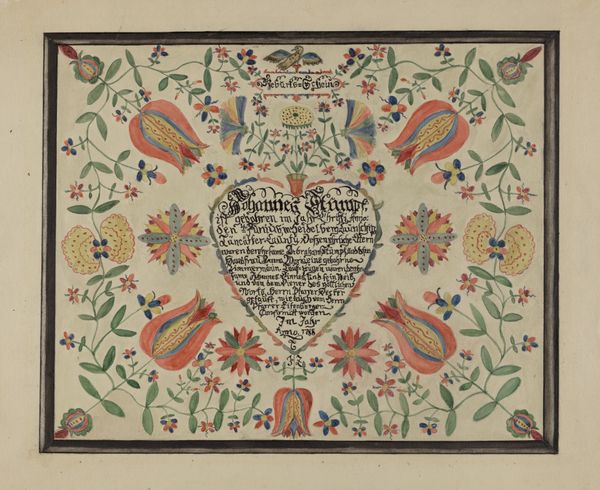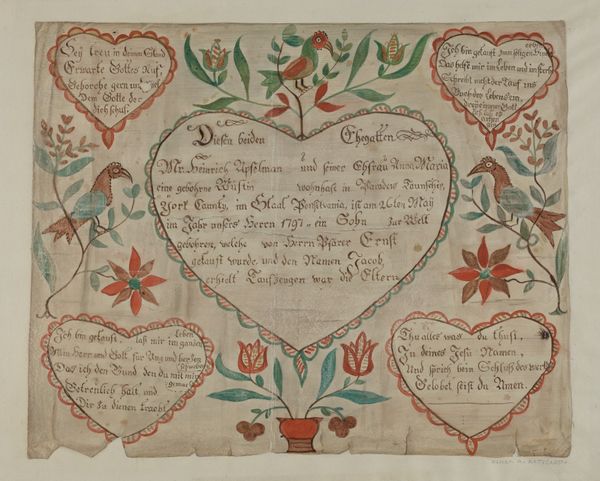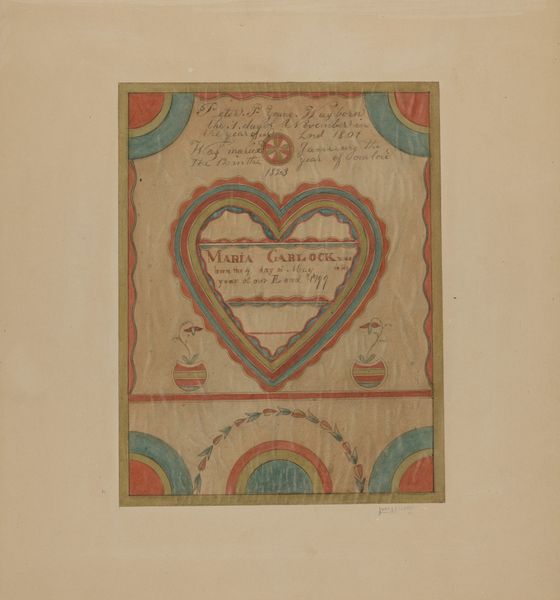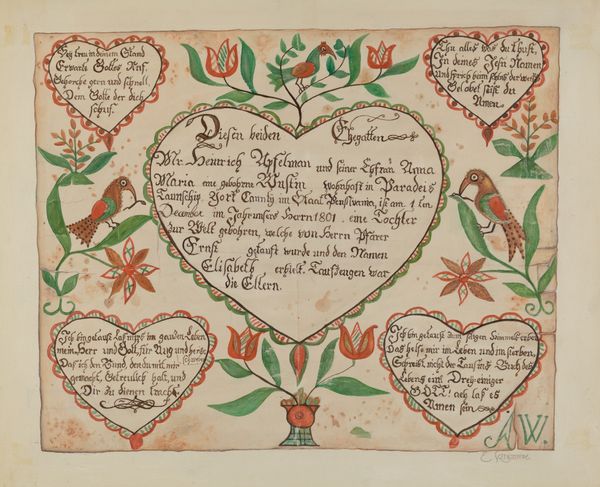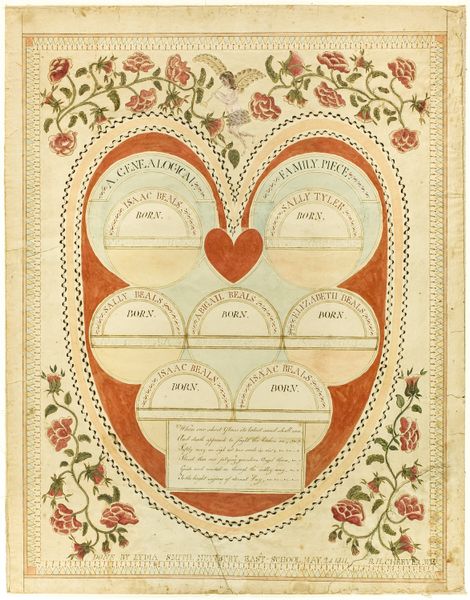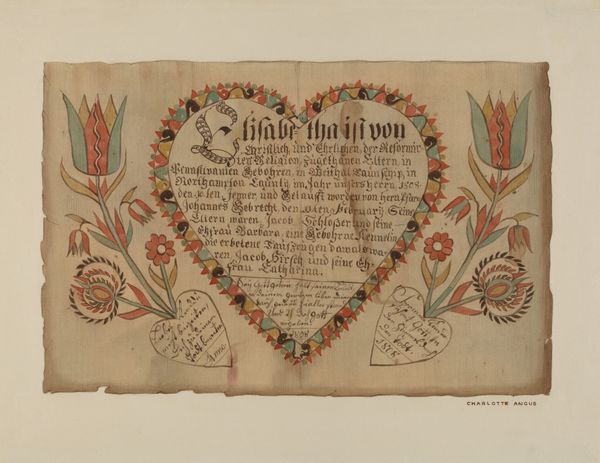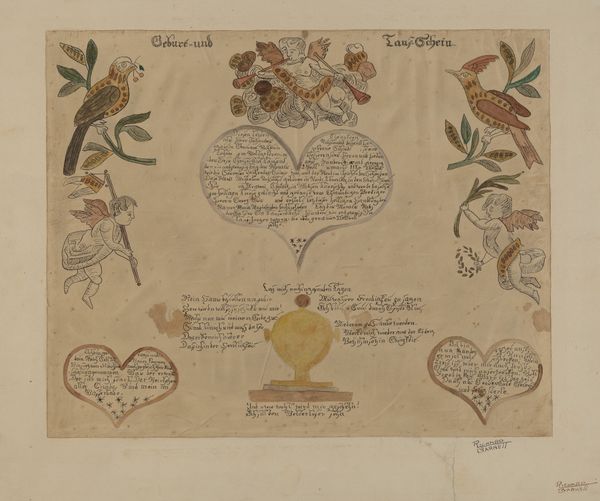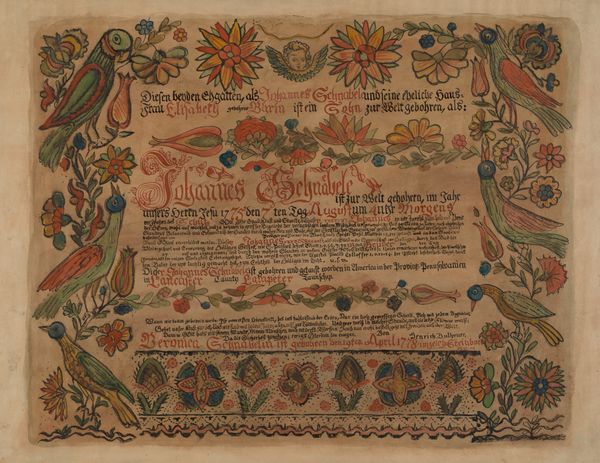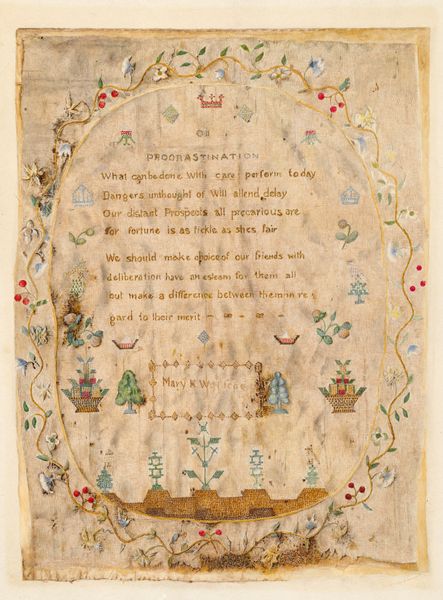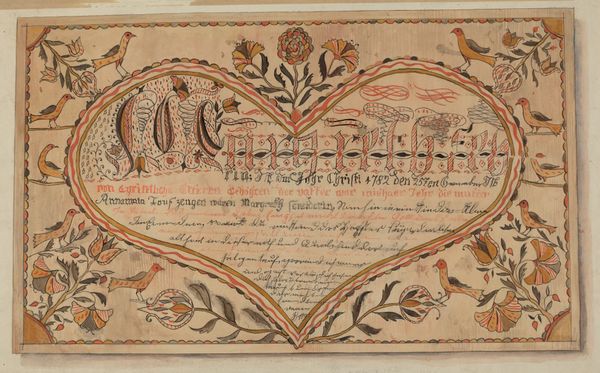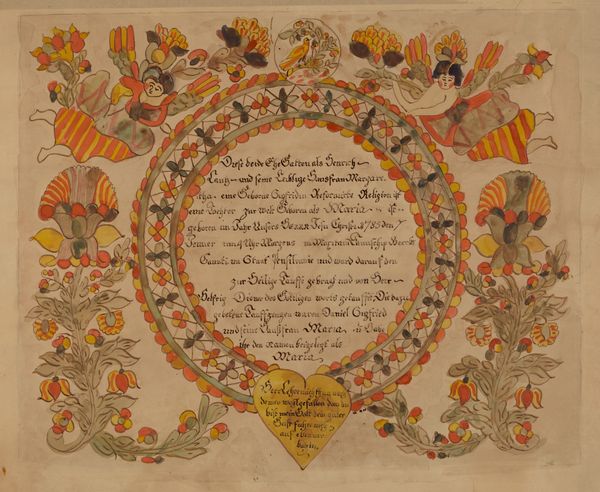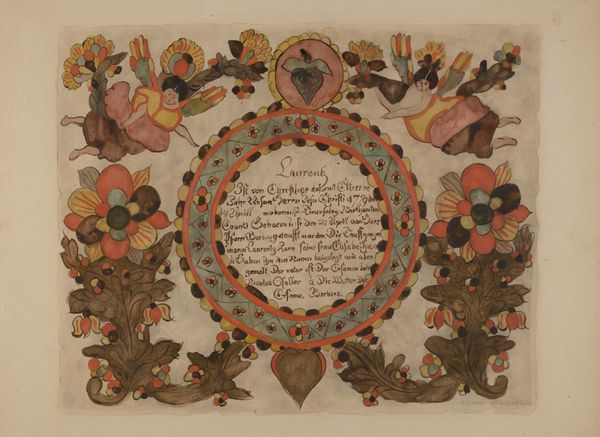
Dimensions: 15 11/16 × 12 13/16 in. (39.8 × 32.5 cm) (sight)22 1/2 × 19 1/2 × 1 in. (57.2 × 49.5 × 2.5 cm) (outer frame)
Copyright: Public Domain
Editor: Here we have "Family Register," created in February 1813 by William Murray. It's a mixed-media drawing on paper and I find the use of hearts and floral designs very appealing. What stylistic features stand out to you? Curator: Notice the composition—the strategic placement of hearts, geometric figures, and text within a decorative border. The symmetrical arrangement gives it a sense of balance, wouldn't you agree? How does the contrast of red, blue and browns across the hearts create hierarchy and visual impact? Editor: I do see that now! The use of colour to emphasize some family members while obscuring others in darker colours is intriguing. Does that speak to you about how the artist feels about some figures relative to others in this familial composition? Curator: Consider the intrinsic value of each component. It's as if Murray constructs not merely a document but also a subjective appraisal of the family's interrelationships. Would you say it elevates mere information to an experience? Editor: Yes, by focusing on structure and symbolism, it seems that Murray infuses the objective family record with subjective emotions, blurring the boundary between representation and expression. It feels both informative and surprisingly personal. Curator: Precisely! We see Murray using formal artistic means, not just to document, but to comment on relationships within the family sphere. It underscores how folk art traditions like this served as a medium for communicating personal stories, rather than objective realities, something that is often lost on audiences viewing the piece at first. Editor: So by paying attention to form and visual vocabulary, we can better unpack the personal narratives embedded within seemingly simple family documents! Curator: Indeed! The power lies within the meticulous artistry.
Comments
minneapolisinstituteofart about 2 years ago
⋮
New York artist William Murray made numerous family registers, particularly for British-American families. Here Murry documents the family of Daniel Contryman, born in 1785. The style is an interesting hybrid of Pennsylvania Dutch (German) fraktur or "broken" writing style and traditional New England family registers. A fabulous example of American folk art, the register remained in the family until it was gifted to the MIA in 2008.
Join the conversation
Join millions of artists and users on Artera today and experience the ultimate creative platform.
